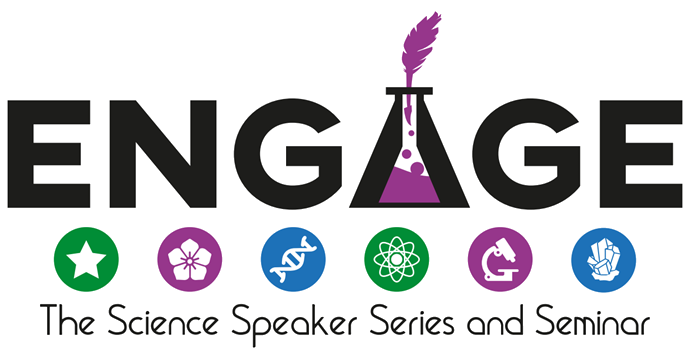DNA Origami: Life Imitating Art
Left: “Depth” by M. C. Escher. Right: a branched DNA structure proposed by Ned Seeman
What do you think of when you hear the phrase “DNA”? Testing services like ancestry.com and 23andme? The hit songs by BTS and Kendrick Lamar? In pop culture, “DNA” is often used as a catch-all phrase for the genetic material that makes our bodies turn out a certain way - or, for the more lyrically inclined, makes us who we are. In reality, the genetic material most people are referring to is called “the genome”. The genome is the instruction manual that tells our cells what to do; DNA is the code or language that the manual is written in. You might have heard of gene editing: reading and writing DNA, to the letter.
But what if I told you that DNA could also be used as a building material?
In the 1950s, the combined work of Rosalind Franklin, James Watson, and Francis Crick confirmed the structure of DNA: the double helix. You’ve probably seen images of the double helix in biology textbooks or science fiction movies. It consists of two strings of DNA, linked to and coiled around each other to form a kind of twisted ladder.
The rungs of this ladder are made up of “bases”, the letters of the DNA code. Turns out there are only four letters in DNA: A, C, G, and T. The rungs are actually one base on each string pairing up with each other. An “A” on one string will only ever pair up with a “T” on another, and vice versa, and a “C” on one string will only pair up with a “G” on the other.
By the 1980s, we had developed the technology to make DNA from scratch, with whatever sequence of rungs/letters we wanted. That’s when chemist Ned Seeman found a print of MC Escher’s “Depth” hanging in a café. The art piece consisted of a fish-like creature, with four fins of equal lengths protruding from its body at 90-degree angles to each other - from afar, it looked like a cross. Ned looked at the piece and thought, why stop at a DNA ladder? Could we make a DNA cross, like the creatures in the artwork?
He and his students designed a DNA string with a sequence of bases that allowed it to form a ladder with one string, and then bend, and then start to make a ladder with another string. They combined four such strings to create the DNA cross structure - the header photo in this post! The same technique was later used to create 3D shapes, like DNA cubes, pyramids, and tetrahedrons.
Top: Rothemund Lab computer generated designs of DNA origami structures. Bottom: microscope images of the same. Reprinted with permission from Paul Rothemund.
In the 2000s, computer scientist Paul Rothemund wondered what other shapes and symbols could be made with DNA. He made one large string of DNA that looped onto itself like a rubber band. He then made much smaller strings that could each bend and form ladders with two separate parts of the larger loop. These smaller pieces would pinch and fold the larger loop into a desired shape, like tiny fingers folding a piece of paper into origami. Paul was able to make a whole series of DNA shapes using this origami technique: a triangle, a star, and even a smiley face.
Later, Lulu Qian’s lab at CalTech took it one step further. She and her students were able to create DNA origami ‘tiles’ – squares of DNA that could be ‘decorated’ with any pattern. This involved taking Paul’s DNA origami idea and applying a whole lot of intricate math and computer-aided design. In a landmark paper in 2017, they used this technique to create a DNA copy of none other than the Mona Lisa!
Left: Qian Lab microscope image of Mona Lisa made out of DNA origami. Reprinted with permission from Lulu Qian. Right: the original Mona Lisa painting.
DNA origami has since become its own category of research within the wider field of DNA computing. Now that we can get DNA molecules to form any shape, we’ve started to design and build machines that work on the molecular level – for a whole range of biomedical and environmental applications. DNA origami has so far been used to build tiny molecular robots, carrier molecules for drugs, and even skeletons for synthetic cells. With this level of precise control over life’s most basic building blocks, there’s no telling what kind of bioengineering – or art – we’ll be capable of creating in the future.
PAPERS CITED
· Rothemund, P. Folding DNA to create nanoscale shapes and patterns. Nature 440, 297–302 (2006). https://doi.org/10.1038/nature04586
· Tikhomirov, G., Petersen, P. & Qian, L. Fractal assembly of micrometre-scale DNA origami arrays with arbitrary patterns. Nature 552, 67–71 (2017). https://doi.org/10.1038/nature24655
Samantha Borje is a Molecular Engineering graduate student in the University of Washington, where she works at the Seelig Lab and Molecular Information Systems Lab. Her research focuses designing massive networks of DNA pieces. She aims to use these networks as diagnostic platforms, where the DNA pieces would set off different chain reactions depending on whether or not a medical sample contains markers for disease.




